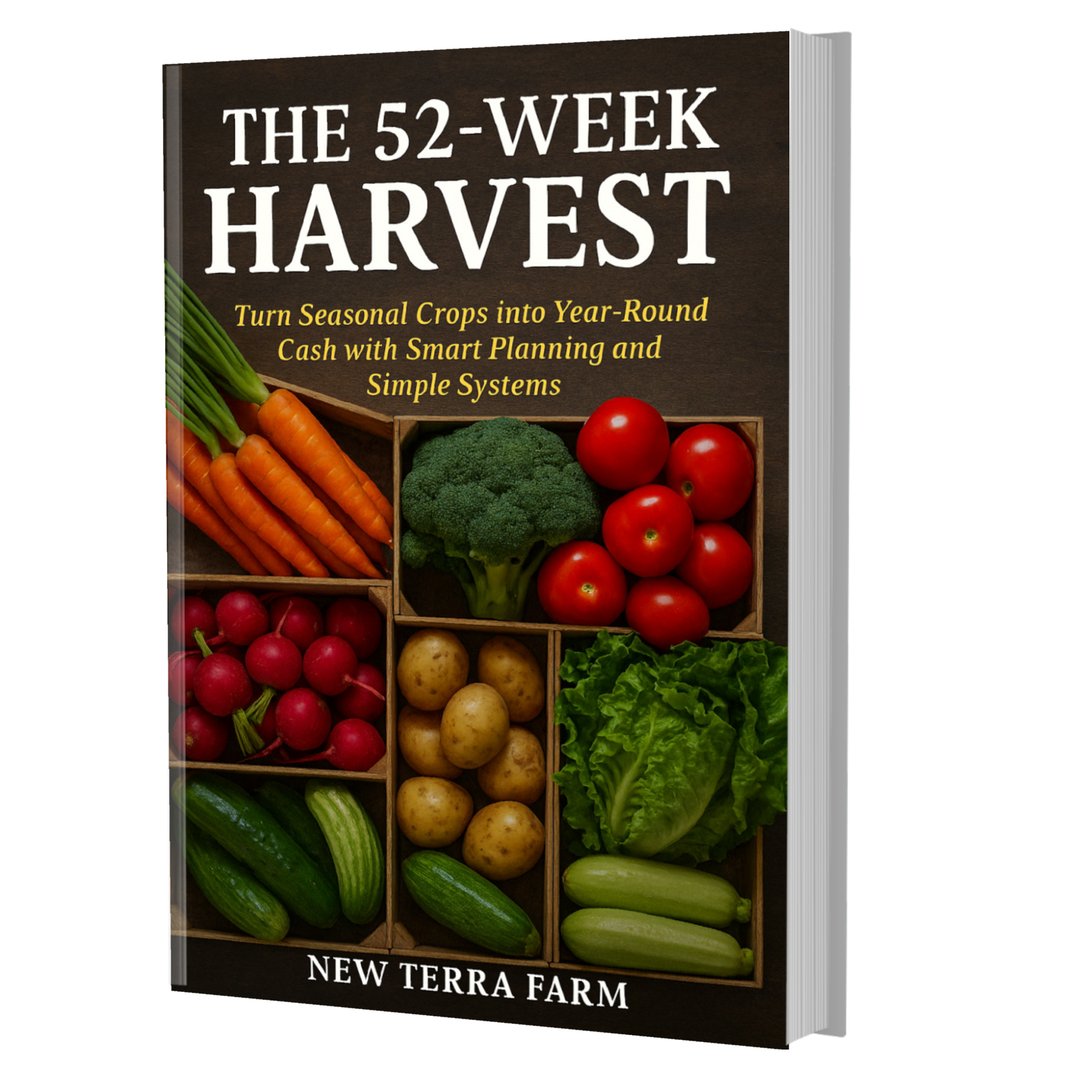Floating row cover is the organic gardener's best friendFloating row cover is made of a light spun polyester fabric, and is used for both frost protection and as a physical barrier against insects.
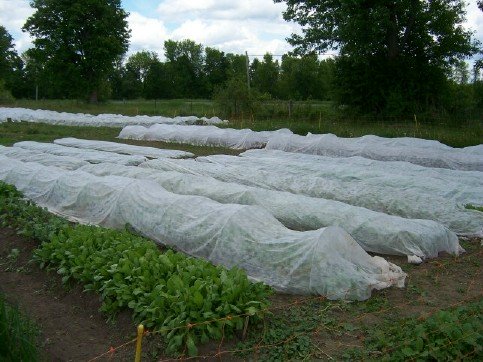 Floating row cover keeps the bugs away and frost at bay Floating row cover keeps the bugs away and frost at bayI also use row cover on my cold frames; because they are permeable, the frames will not overheat as they would if covered by glass or plastic. This is a good use for pieces if row cover that are too small for your garden beds. Caution: the row cover will let rain in, so if a heavy rain is predicted cover your cold frames with something impermeable to prevent flooding. A couple years ago I figured how to grow meslcun (micro salad mixes) with less work. I started the seeds in trays with about 3/4 inch of damp ProMix. I kept them covered with clear tray lids until they germinated, then put the trays out on pallets in a semi-shady area, and covered them with floating row cover to keep out bugs and falling debris. This worked very well, a bumper crop of salad greens with no weeds or bugs. 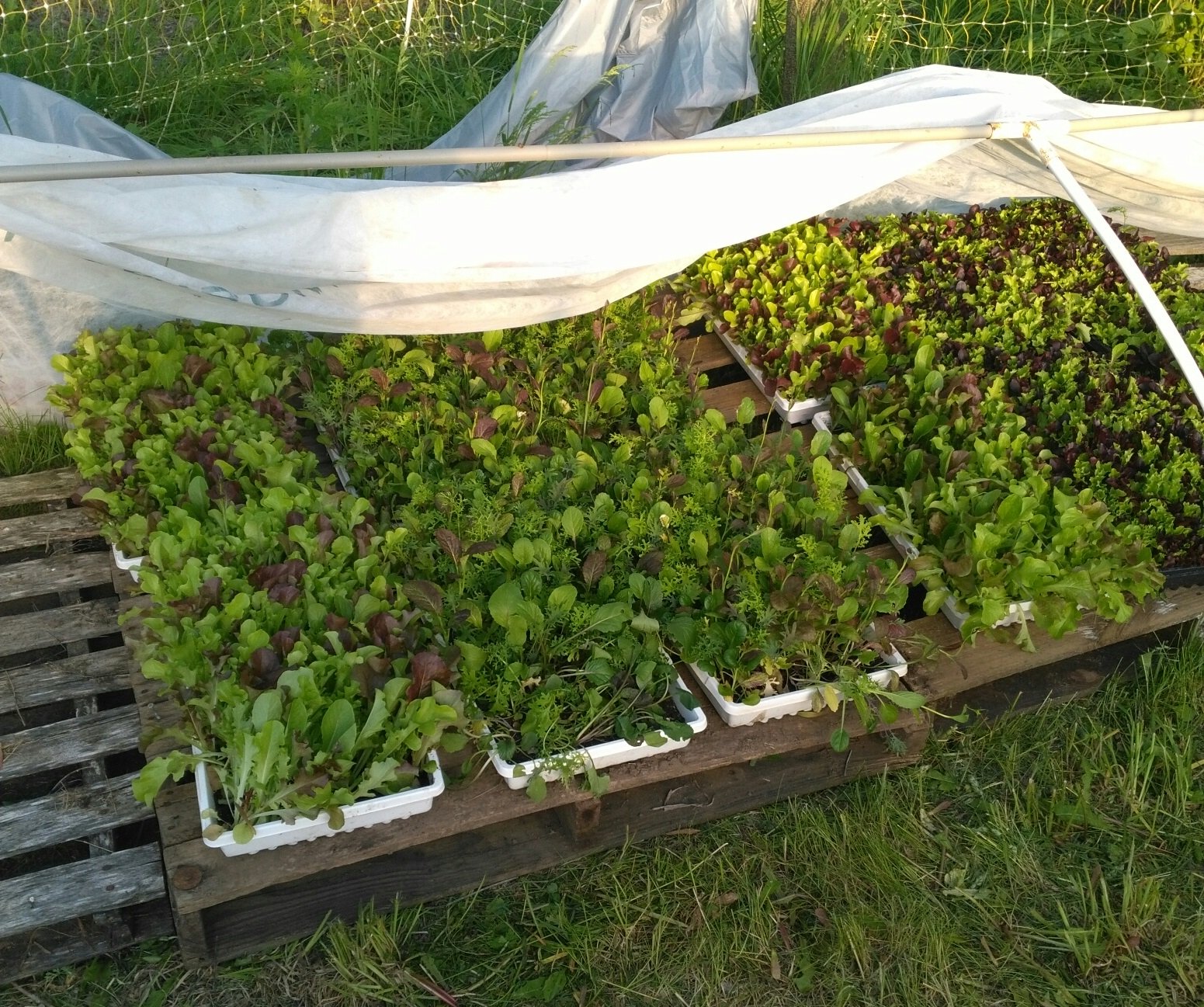 I grow mesclun in a soil-less mix (ProMix)and protect the trays with row cover. I grow mesclun in a soil-less mix (ProMix)and protect the trays with row cover.I even use scraps of row cover to make my
compost tea
I put a couple shovels-full of good aged compost in a piece of row
cover, tie it up, and drop in my compost barrel with the water. The row
cover makes a great strainer for the tea.
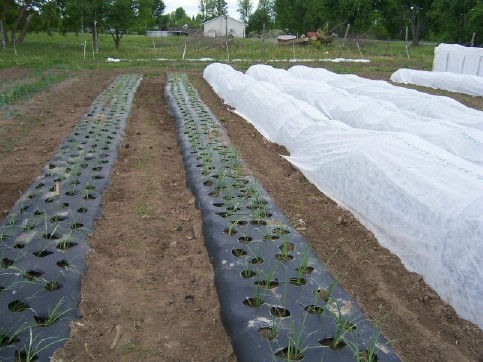 Film mulch and row cover: the gardener's secret weapons Film mulch and row cover: the gardener's secret weaponsWe also use the row cover on beds that we cover with biodegradable film mulch - just remember to put your drip irrigation down before you place the mulch.
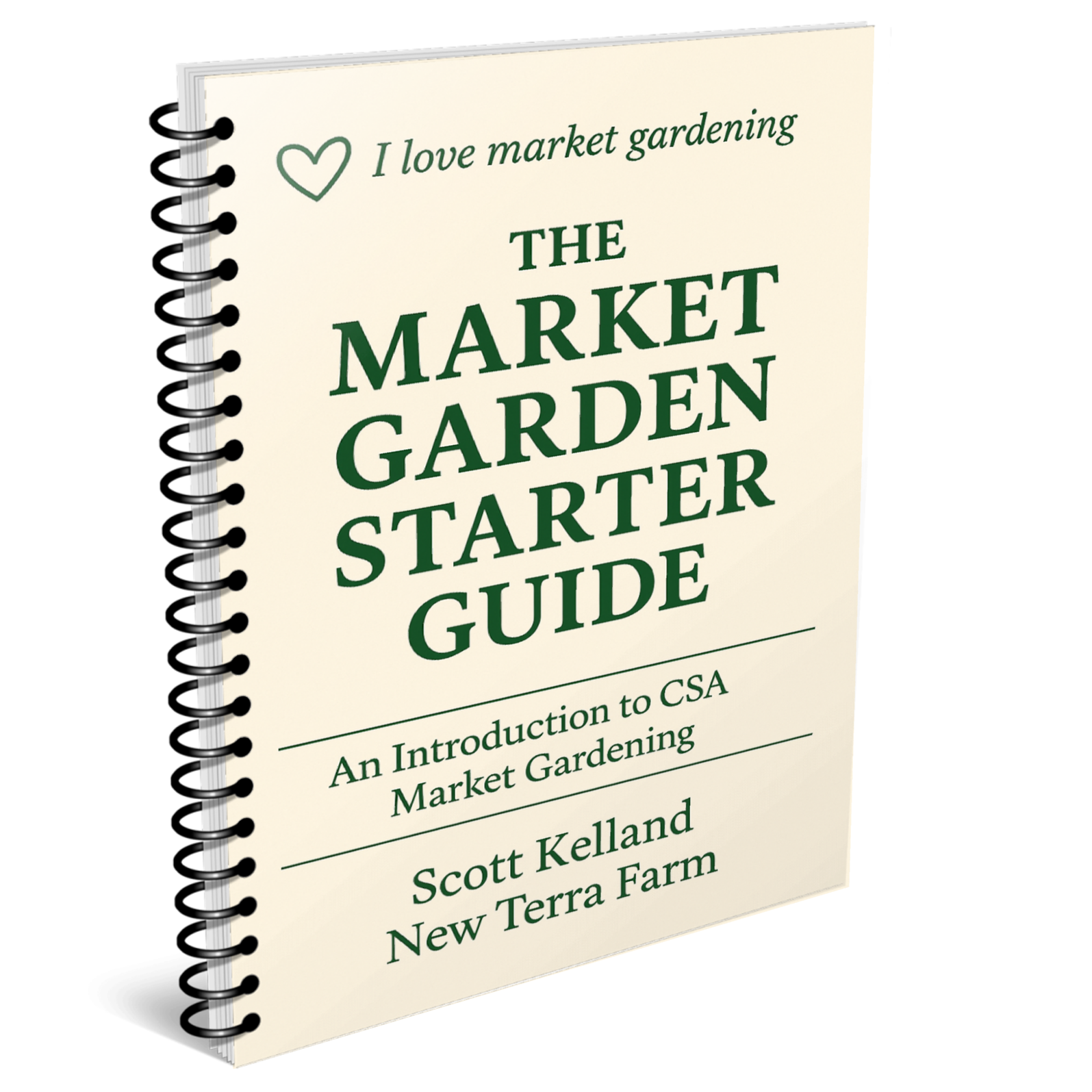 The consumer demand for fresh local organic food has never been higher. Bad news on the supply chain is good news for local growers. Get my free Organic Market Gardener Start-up Guide and see if this is the right time to launch your CSA market garden business. Enter you email and your free guide will be sent to you right away. More free reports here Turn Your Garden Into a Year-Round Harvest Machine! The 52-Week Harvest Plan lays out a complete system to plant, protect, and profit from your garden all year long. This season-based method adapts to your climate and works with changing growing conditions, not against them.
|
See something you like? Share!
Recent Articles
-
Farm grown reviews of products recommended by New Terra Farm
Nov 07, 25 06:25 AM
Find great farm and garden products in my farm grown reviews -
Community Supported Agriculture Marketing Ideas To Sell Out The Season
Nov 05, 25 05:18 AM
Authentic Community Supported Agriculture marketing ideas to grow loyalty, boost sign-ups, and sell out your CSA every year -
Learn how much to feed chickens before you bring your birdies home
Nov 02, 25 10:36 AM
You've ordered your birdies, now make sure you understand how much to feed chickens fo a healthy and happy flock
